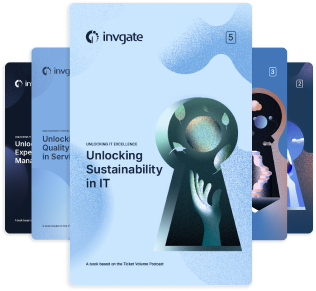When computers are returned to a corporation, they don’t simply disappear into storage or landfills. Companies often implement structured processes to make the most of these devices while adhering to regulatory and ethical standards.
Managing returned computers is a practical and pressing concern for corporations, whether dealing with employee's offboarding, end-of-life hardware, or upgrades. The process involves multiple considerations, from data security to environmental compliance.
This article explores the strategies corporations employ to handle returned computers effectively, offering insights into why these approaches matter and how they align with broader goals like sustainability and cost management.
The importance of managing returned computers
Returned computers pose both risks and opportunities, making their proper management a crucial task for corporations. On one hand, mishandling these devices can expose organizations to data breaches, compliance violations, and reputational damage. On the other, when managed thoughtfully, they can become an asset rather than a liability.
For instance, let’s take a financial services company dealing with returned laptops after an employee offboarding. The stakes are high—those devices may contain sensitive client data or proprietary information. The company implements a process to securely collect, sanitize, and audit each laptop before deciding its next use. Some are refurbished and redeployed internally, reducing hardware expenses. Others are sold to certified resellers, and those beyond repair are sent to an e-waste recycling partner that meets strict environmental standards.
This approach safeguards organizations against risks like regulatory penalties for non-compliance with privacy laws (e.g., GDPR or HIPAA) or data breaches.
It also aligns with broader goals like sustainability and operational efficiency. Consider this: the annual generation of e-waste is expected to rise by 2.6 million tonnes each year, potentially reaching 82 million tonnes by 2030.
Good practices can help organizations meet sustainability goals and qualify for certifications like ISO 27001 for secure data handling, ISO 14001 for environmental management, or R2 for responsible recycling. These certifications solidify compliance and reinforce the company’s brand as a socially responsible leader, attracting environmentally conscious customers, investors, and employees.

Key considerations in the process
- Data security: Returned devices often contain sensitive information, requiring robust data-wiping protocols to prevent breaches.
- Regulatory compliance: Environmental and privacy laws vary by region but often impose strict guidelines on how electronics are handled.
- Sustainability: Minimizing e-waste and promoting reuse align with corporate social responsibility initiatives.
- Cost recovery: Resale or refurbishment offers a way to recoup investments in technology.
Unlocking Sustainability in IT
Discover the importance of embracing sustainability in IT.
Download for free
Common strategies for handling returned computers
Corporations adopt a mix of approaches to address the practical and legal aspects of managing returned devices.
1. Refurbishment and redeployment
Many companies refurbish returned computers to extend their lifecycle. This process can include hardware upgrades, software reinstallation, and thorough testing to ensure the device meets quality standards. Companies may repurpose refurbished devices for use in other departments, reducing the need for new purchases.
Partnering with specialized firms enables corporations to handle large volumes efficiently. We’ll cover more on these services later on.
2. Resale in secondary markets
Selling returned computers in secondary markets is a common practice. Corporations can work with resellers or directly market these devices to consumers, small businesses, or schools.
Of course, the benefits behind this are that it recoups costs and provides others with access to affordable technology. This is, of course, as long as the devices undergo proper data wiping and quality assurance, which are crucial to maintaining trust.
3. Recycling
When refurbishment or resale isn’t viable, recycling becomes the next option. Components such as metals, plastics, and circuit boards can often be recovered and reused in manufacturing.
Certified recycling programs ensure that hazardous materials like lead or mercury are handled safely. Recycling reduces landfill waste and supports the circular economy by recovering valuable resources.
4. Donation
Some companies choose to donate functional computers to schools, non-profits, or community organizations. Donations not only support social initiatives but also provide tax benefits in certain jurisdictions. But remember, donations require similar data-wiping procedures as resale to protect sensitive information.

Benefits and challenges of managing returned computers
So, you need to manage returned computers; there are two sides to this equation: all the significant advantages you can unlock, but also all the hurdles you need to address to achieve optimal outcomes.
We can’t stress enough the importance of structured policies and well-executed processes to get the right outcomes. Now, let’s review some costs and benefits:
Benefits
- Cost recovery
Returned computers often retain value that can be unlocked through refurbishment or resale. This allows companies to offset the cost of their initial investments in technology. - Environmental impact
Proper handling of returned devices contributes to environmental sustainability by reducing e-waste. Refurbishment extends the life of equipment, delaying its entry into the waste stream. Recycling ensures that valuable materials like metals and plastics are recovered, while hazardous components are safely managed, supporting a circular economy. - Brand reputation
Organizations that adopt responsible practices in managing returned computers can strengthen their reputation as socially and environmentally conscious entities. Customers, investors, and employees are increasingly drawn to businesses that demonstrate ethical values, such as reducing environmental harm and supporting local communities through donations. - Regulatory compliance incentives
Properly managed computer returns often qualify organizations for compliance credits or certifications. For example, adherence to e-waste laws or data protection regulations can avoid penalties while opening up opportunities for industry recognition and green certifications. - Operational efficiency
A well-defined process for handling returns streamlines workflows, enabling better inventory management, faster processing, and reduced storage costs for unused or obsolete equipment.

Challenges
- Logistics
Handling a large volume of returned devices requires significant logistical planning. Companies must determine how to collect, sort, process, and track these devices effectively. For global operations, the challenge compounds as returned computers may need to be managed across multiple locations, each with unique regulations and logistical constraints. - Compliance complexity
Environmental and privacy regulations vary by country and even region. Companies must navigate laws governing data privacy (e.g., GDPR in Europe or CCPA in California) while ensuring compliance with e-waste disposal rules. Failure to meet these requirements can result in fines, lawsuits, or reputational damage. - Data security
Every returned computer represents a potential risk if sensitive data is not properly sanitized. Breaches stemming from improperly wiped devices can lead to financial loss, legal consequences, and damage to trust. Corporations need robust protocols, often certified by third-party organizations, to guarantee the safe erasure of all data before refurbishment, resale, or recycling. - Resource allocation
Implementing and maintaining an effective system for managing returns can strain resources. Companies may need dedicated personnel, specialized software, or partnerships with refurbishment and recycling firms. Balancing these resource demands with other business priorities often poses a challenge. - Unpredictable device quality
Returned computers often vary in condition, from nearly new to heavily damaged. Sorting and deciding the best course of action for each device—whether refurbishing, recycling, or discarding—requires a careful assessment, adding complexity to the process. - Cost vs. benefit analysis
Although refurbishment and resale can offset costs, these efforts often require upfront investment in labor, technology, and quality assurance. Companies must evaluate whether the potential gains justify these expenses, particularly for devices with low resale value or significant repair needs. - End-of-life concerns
Not all returned devices can be refurbished or resold. Some may be too outdated or damaged for viable reuse, leaving recycling as the only option. Recycling, while beneficial, can still involve costs and logistical hurdles, such as transporting devices to certified facilities and managing hazardous materials.
Types of services you can hire for managing e-waste
Many corporations turn to third-party services to handle the complexities of managing returned computers. These providers specialize in tasks ranging from secure data destruction to environmental compliance, offering tailored solutions that reduce risk and maximize value.
Here are the key types of services they offer:
- Data sanitization and destruction: Data security is a top priority for any organization handling returned computers. Specialized third-party providers offer secure data wiping, degaussing, or physical destruction of storage devices. These services ensure compliance with privacy regulations like GDPR, HIPAA, and CCPA while protecting sensitive corporate or client information. Certifications and audit trails provided by these vendors add an extra layer of accountability.
- Refurbishment and resale services: For companies looking to recover costs, refurbishment and resale services can be highly beneficial. Providers assess the condition of returned devices, repair or upgrade them if needed, and sell them on secondary markets.
- E-waste recycling and disposal: Devices that cannot be refurbished or resold must be disposed of responsibly. Third-party recycling services handle the disassembly, material recovery, and proper disposal of hazardous components.
- Reverse logistics: Handling the physical movement of returned devices, especially for large-scale or global operations, can be challenging. Reverse logistics providers manage everything from collection and transportation to sorting and inventory tracking. These services streamline the process, reducing the burden on internal teams.
- Compliance and audit support: Some third-party services focus on helping organizations navigate the regulatory landscape. They provide expertise in local and international privacy and environmental laws, assist with documentation, and conduct audits to verify compliance. This ensures that companies avoid legal penalties and maintain a good standing with regulators.
- IT asset disposition (ITAD) providers: Comprehensive ITAD services combine multiple offerings, such as data destruction, refurbishment, resale, and recycling, into a single solution. These providers often offer tailored programs that align with corporate policies and sustainability goals, making them a one-stop shop for managing returned computers.

Tips for businesses handling returned computers
If your organization deals with returned devices, adopting structured processes can help maximize their value while minimizing risks.
- Develop clear policies: Outline procedures for refurbishment, resale, recycling, and donation to streamline decision-making.
- Invest in data security: Use certified data-wiping software or services to protect sensitive information.
- Partner with specialists: Collaborate with refurbishment or recycling firms to manage large-scale returns efficiently.
- Track assets: Implement Asset Management software to monitor the lifecycle of returned computers.
- Prioritize compliance: Stay informed about regulations in your region to avoid legal issues.
Conclusion
The way corporations handle returned computers (and hardware lifecycle in general) reflects broader trends in sustainability, security, and efficiency. Whether refurbishing for reuse, reselling to recover costs, recycling to reduce waste, or donating to give back to communities, each approach addresses unique challenges while offering distinct benefits.
For businesses, understanding these strategies can inspire improvements in their own asset management practices, contributing to financial and environmental gains alike. With a thoughtful and structured approach, organizations can make the most of returned technology while supporting a more sustainable future.















